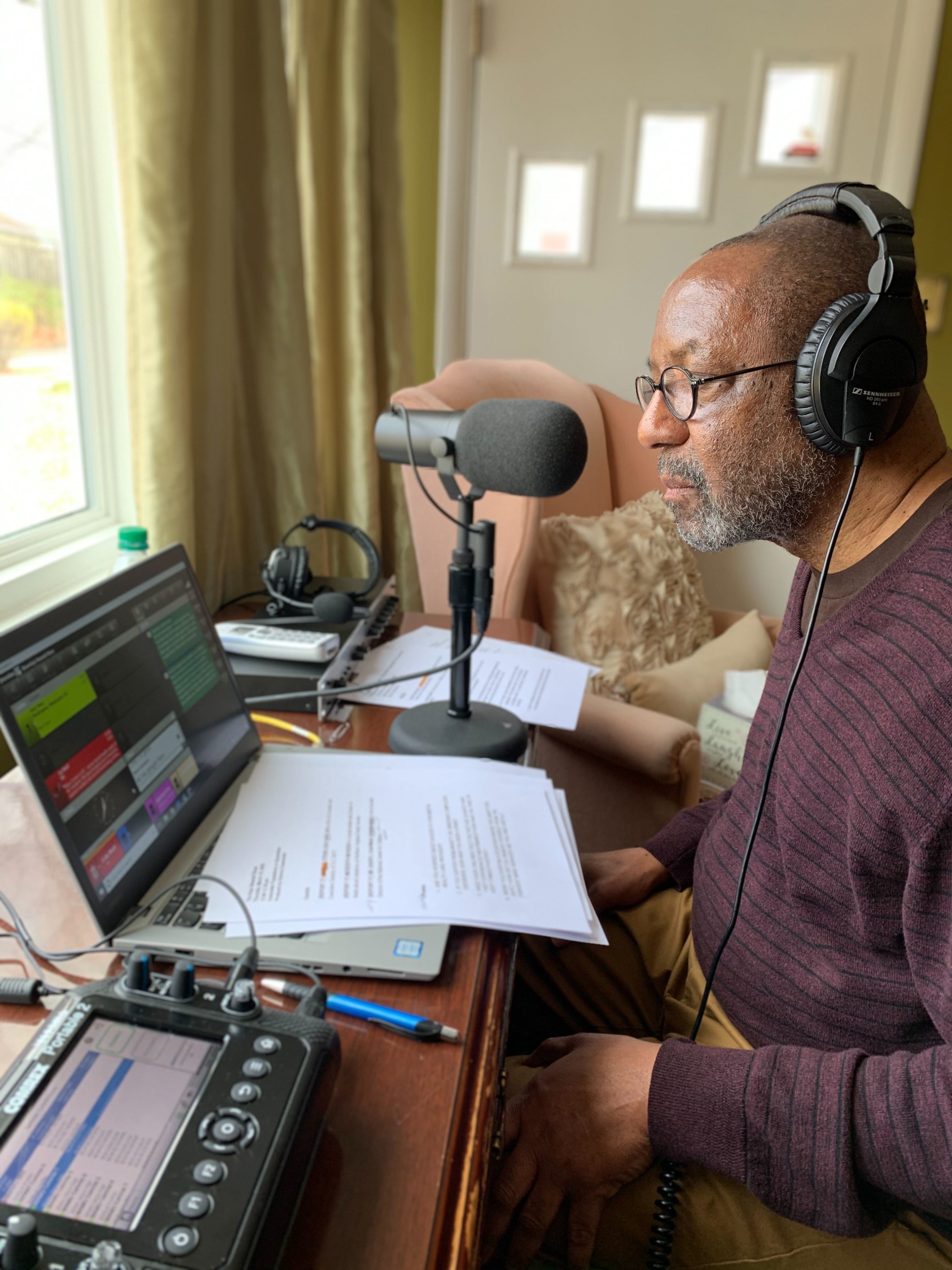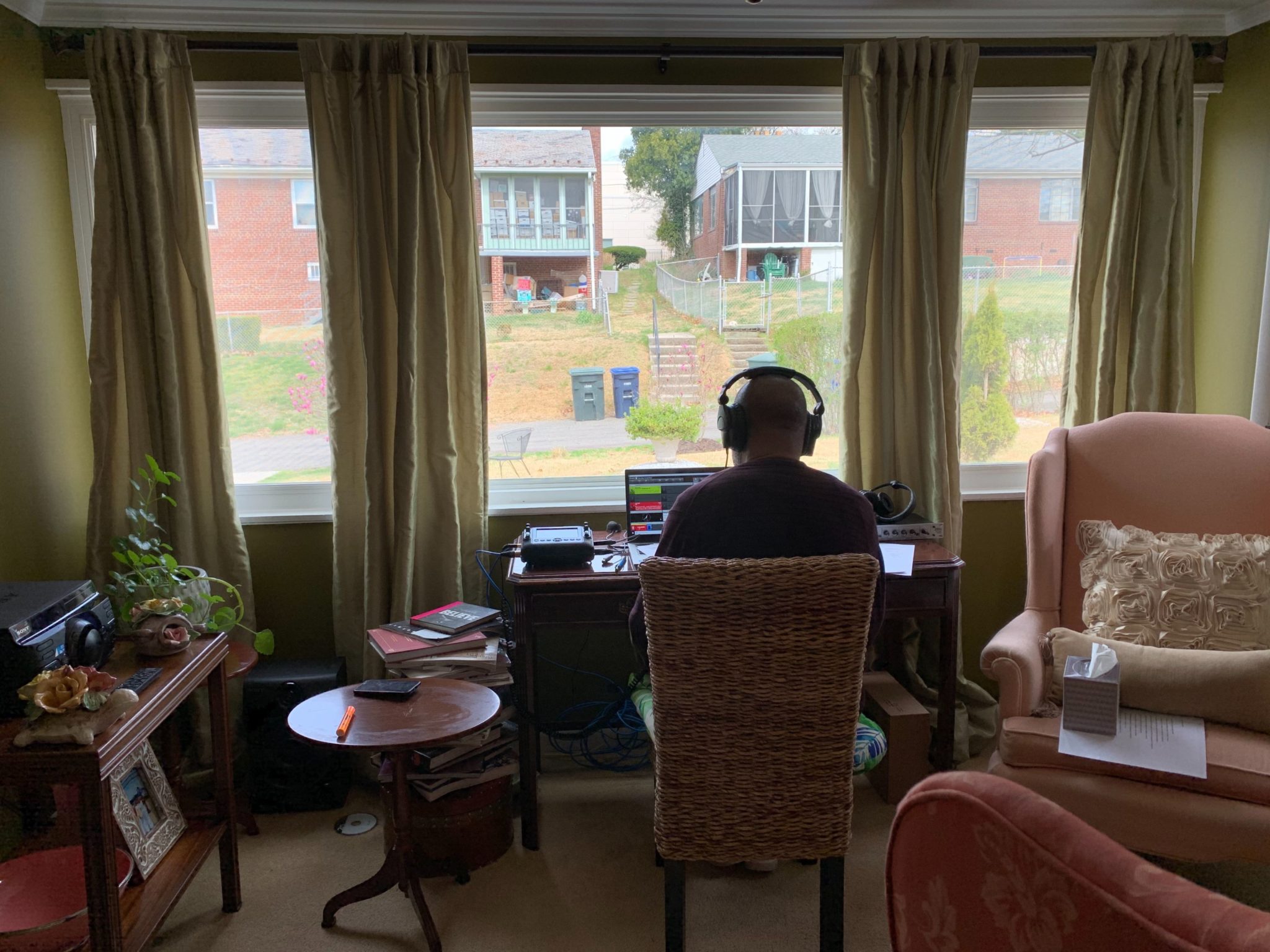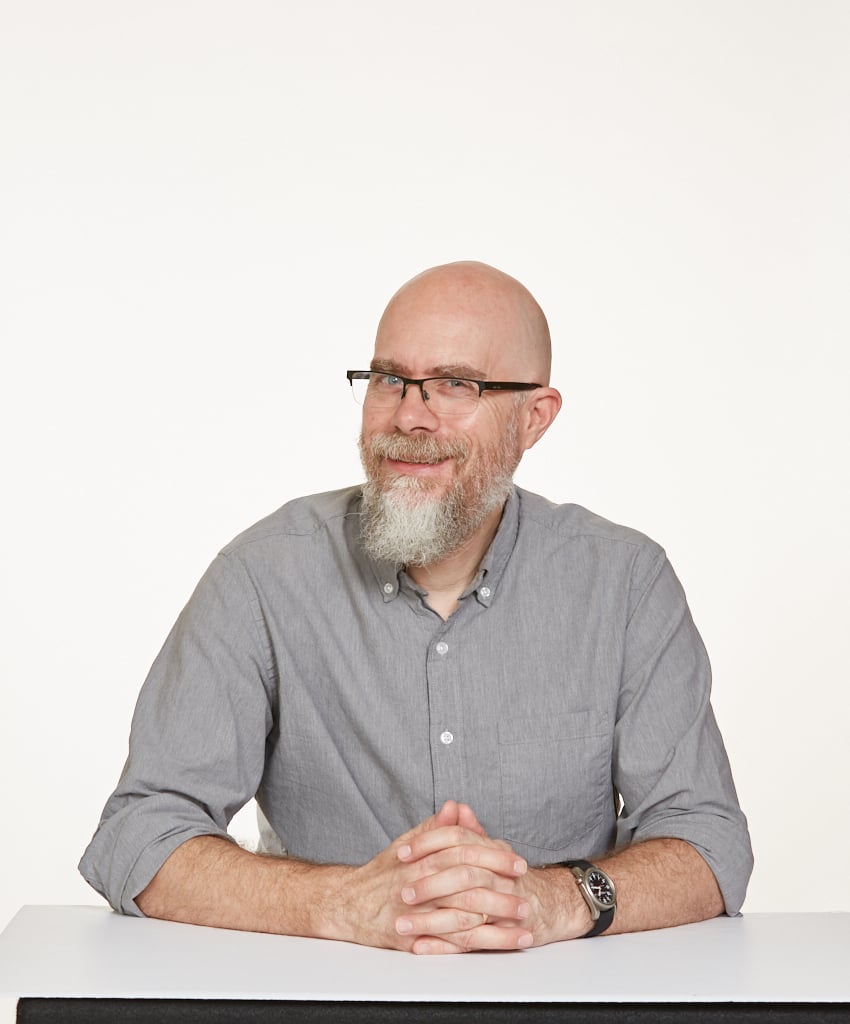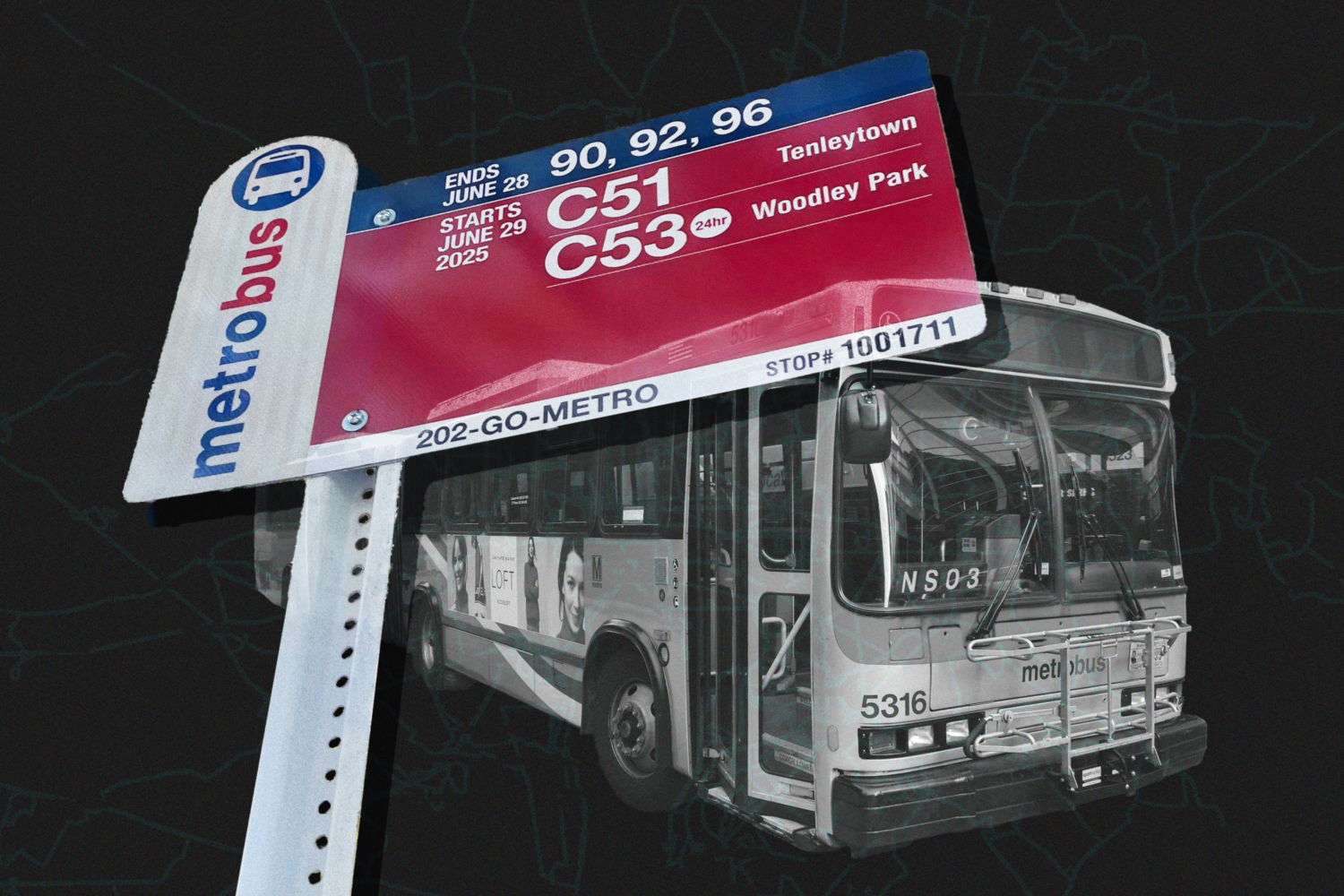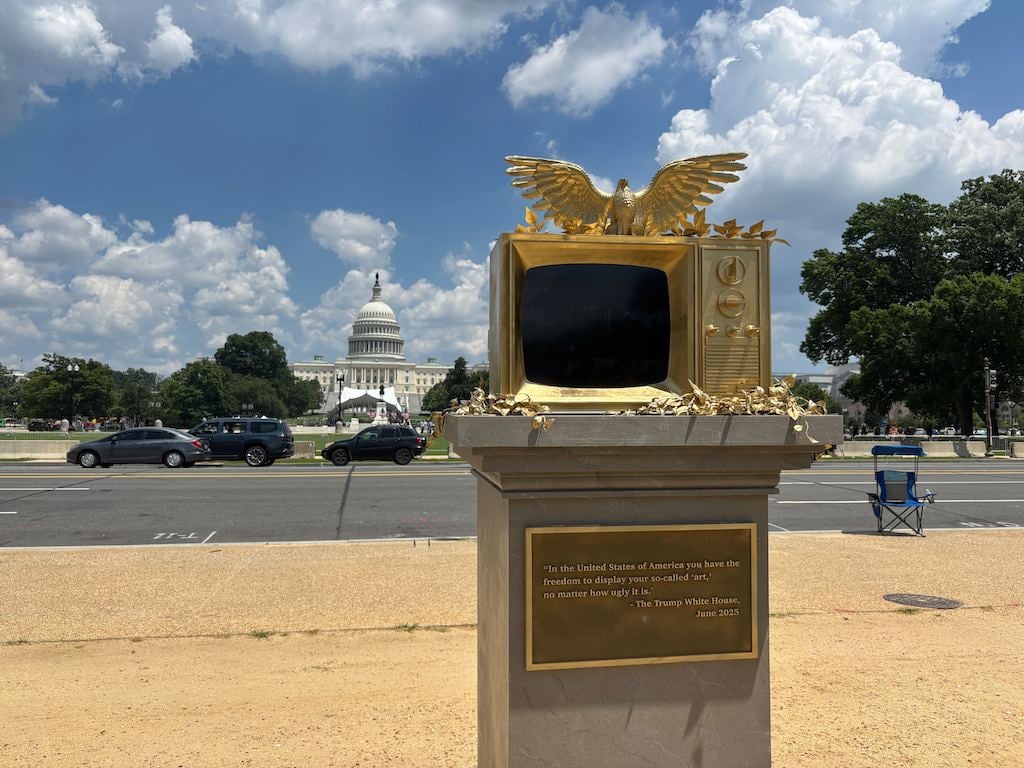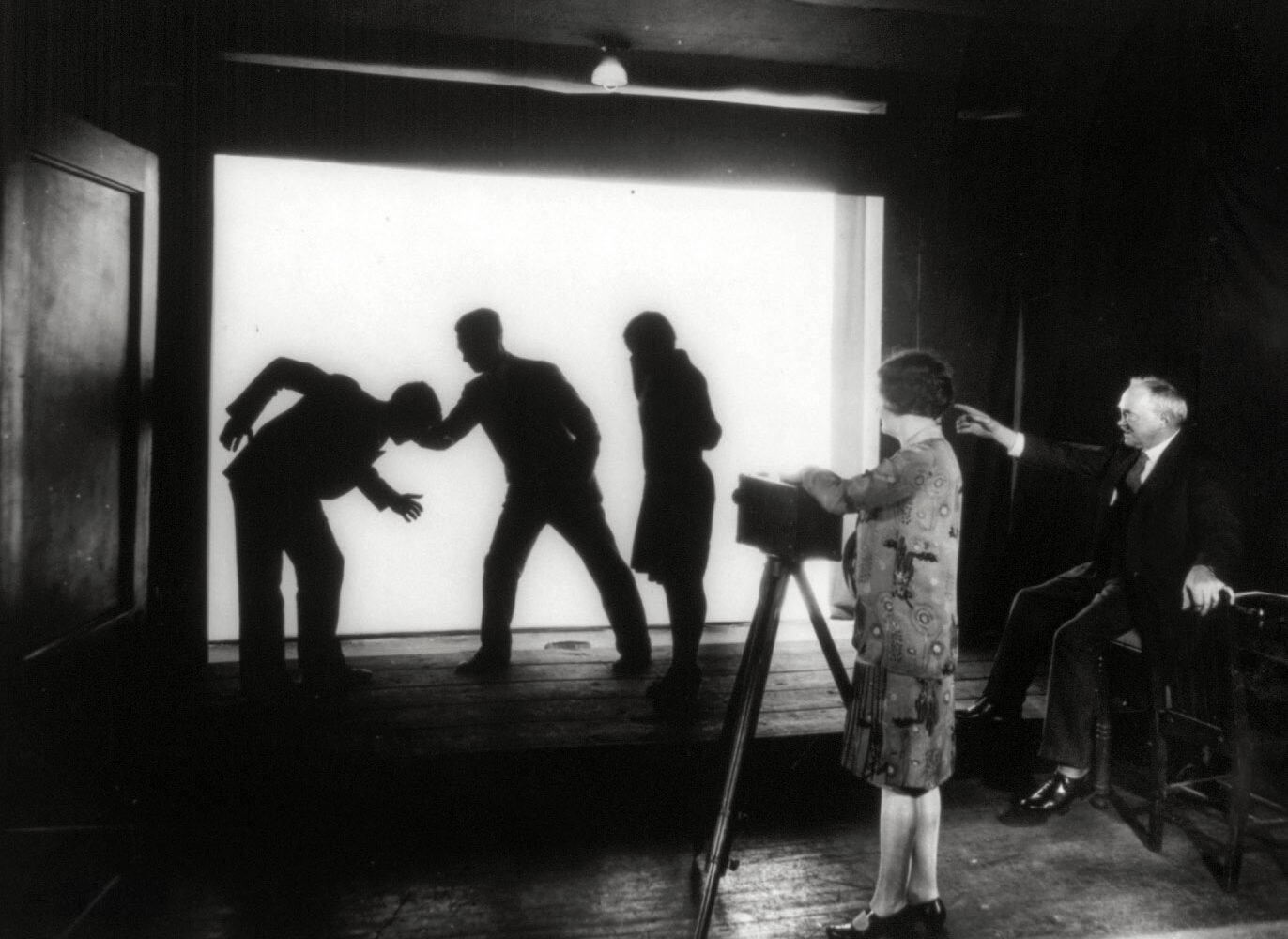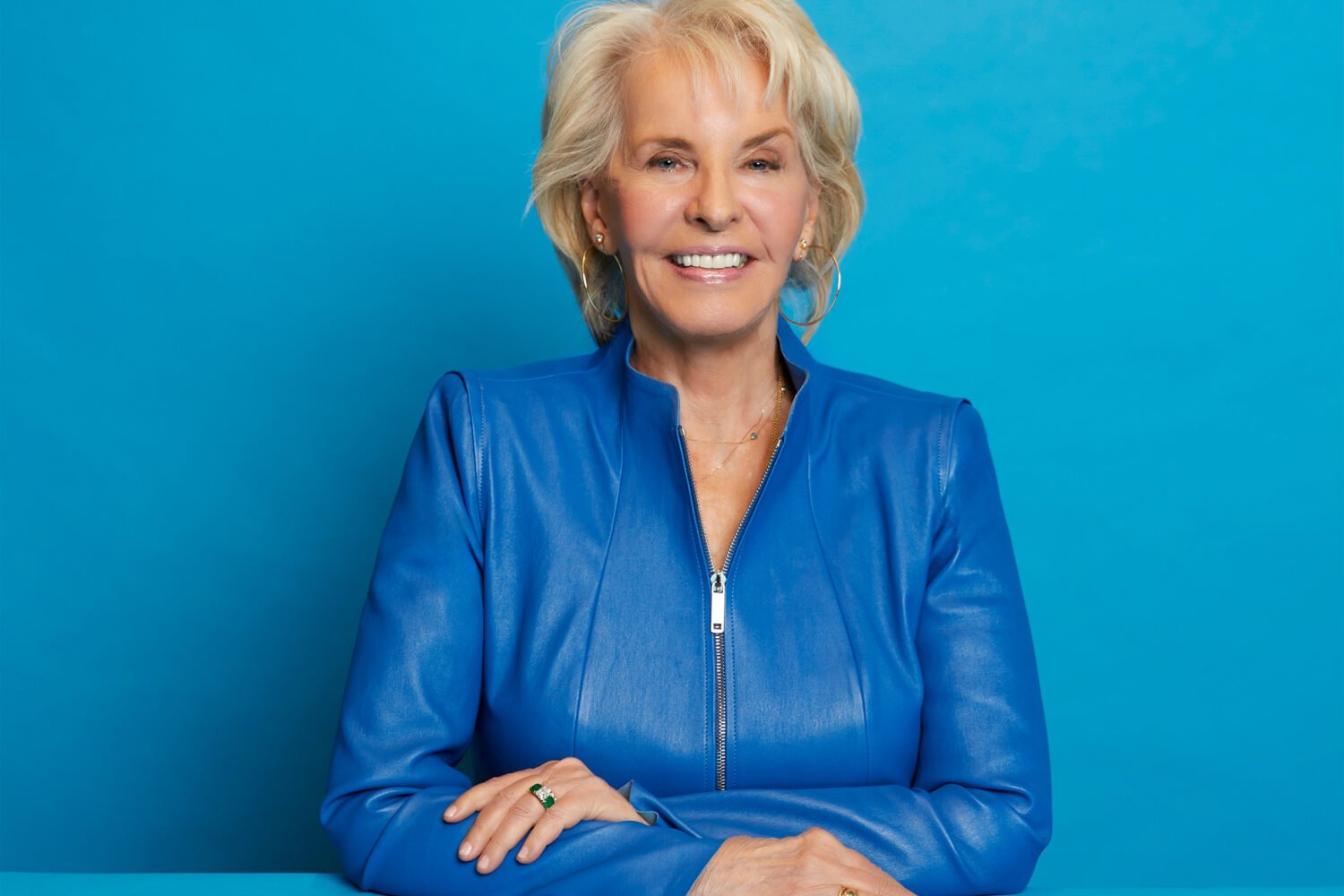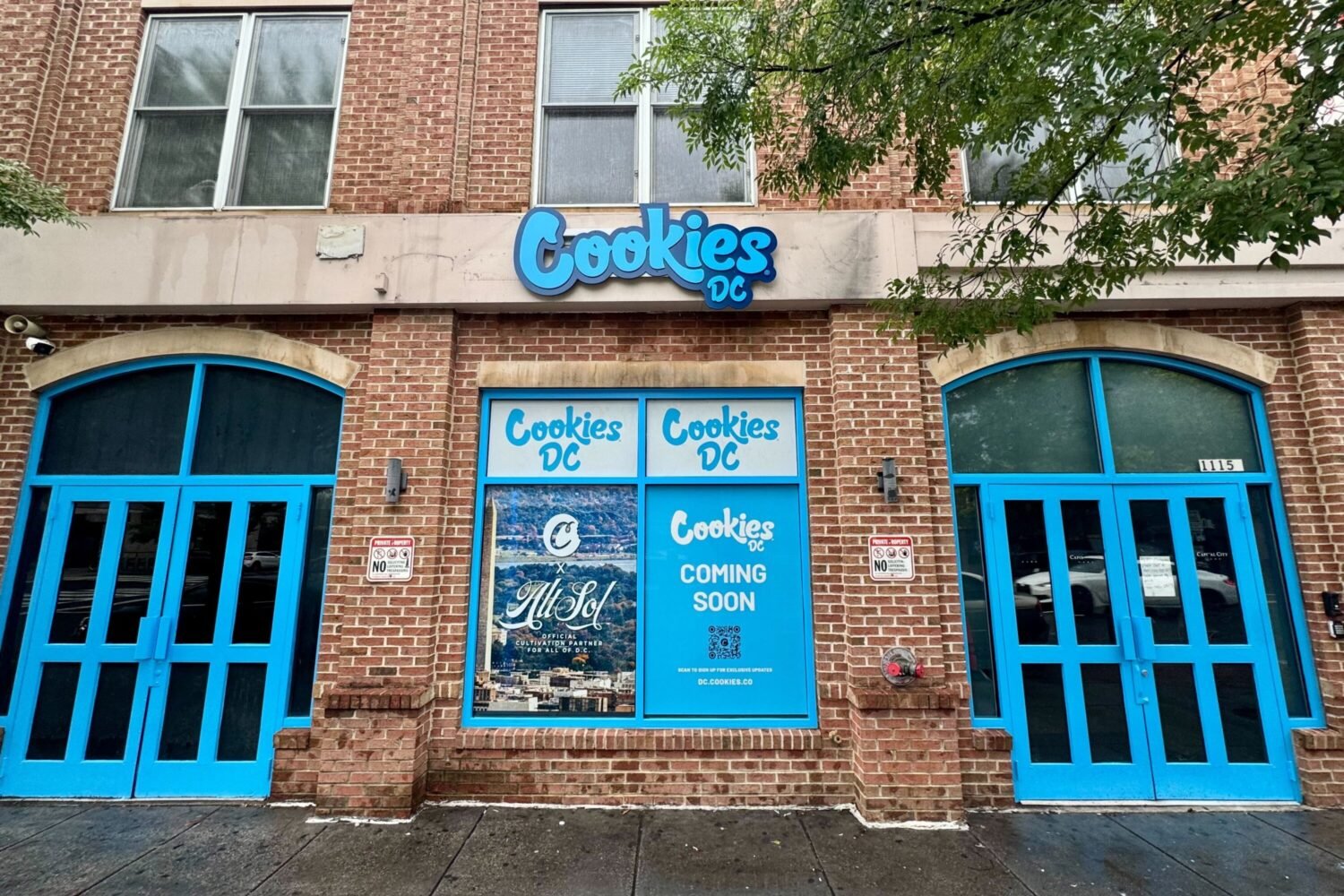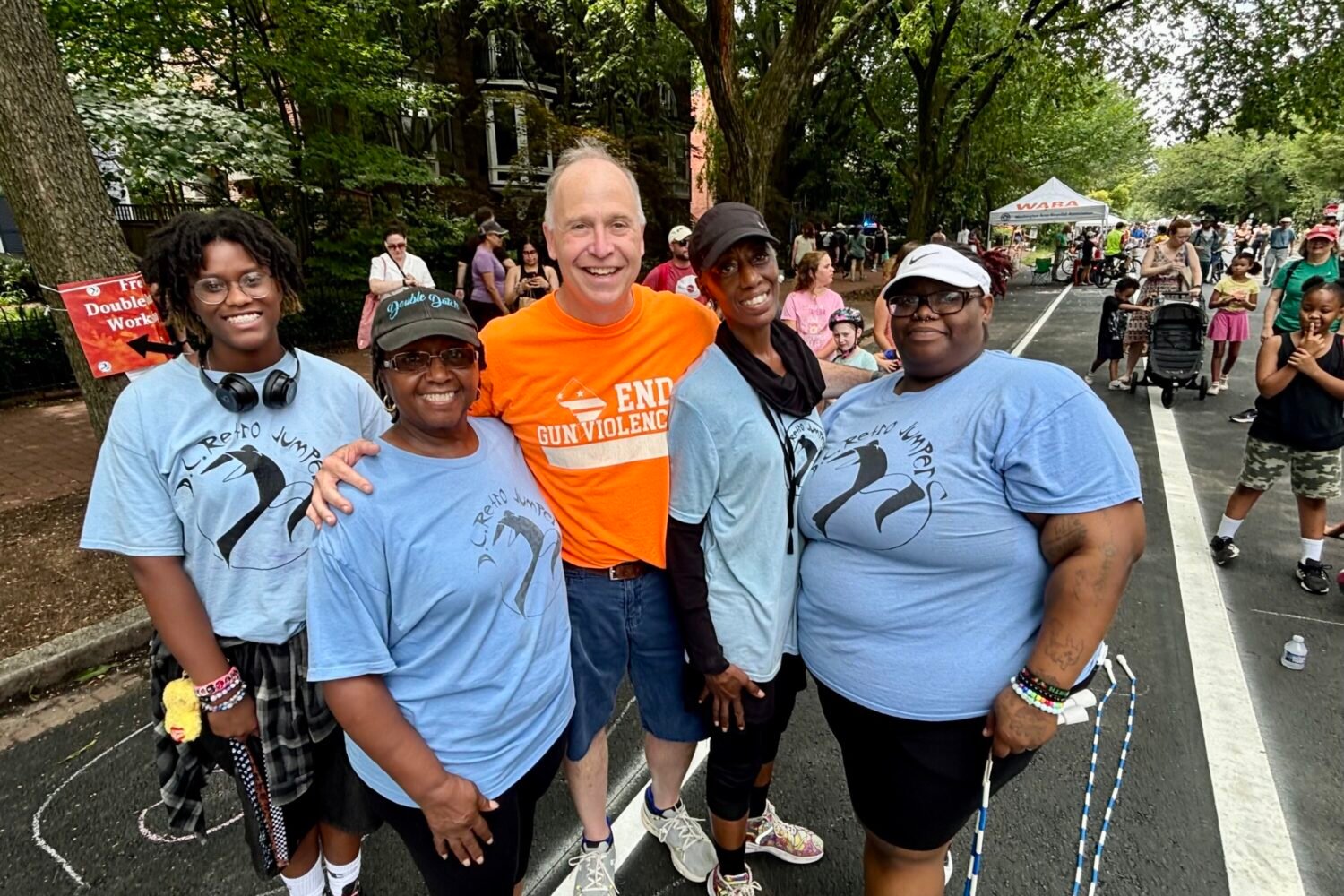About Coronavirus 2020
Washingtonian is keeping you up to date on the coronavirus around DC.
For journalists, working from home during the coronavirus crisis means moving all newsroom interactions to Slack, mastering the fine points of Zoom meetings, and finding a chair that offers a modicum of support. For reporters who work in audio, there’s all that plus figuring out how to make your recordings sound professional.
Which is how Martine Powers ended up in a closet in her DC apartment, her laptop perched on an ironing board, a blanket and her clothes deadening the sound. The host of the Washington Post‘s daily Post Reports podcast has been recording this way since the second week of March, and one problem she’s encountered is that when she answers the phone with a certain way of saying “hello,” her dog, Shiloh, begins barking.
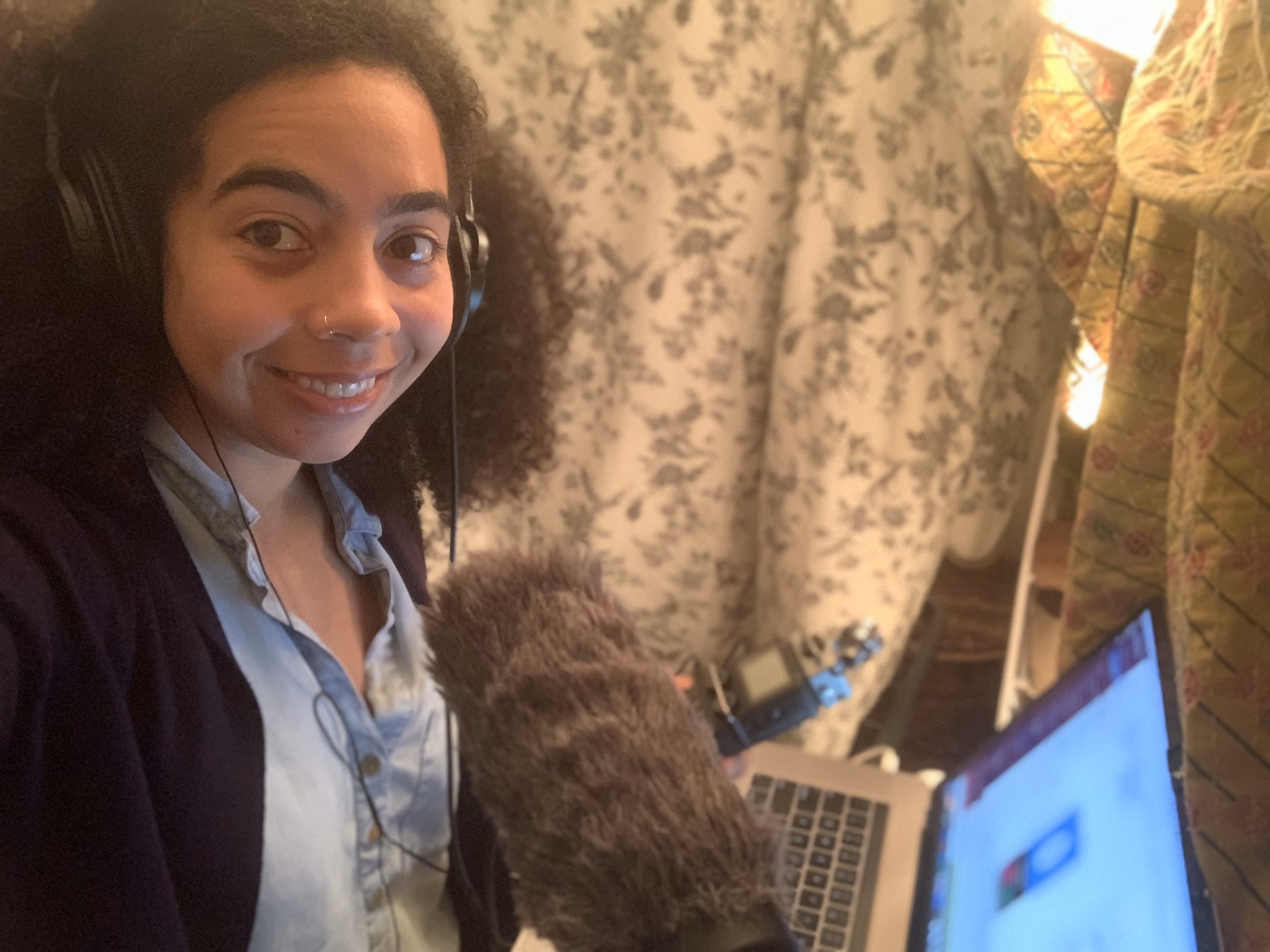
Post reporters are primarily the guests on Post Reports, and staffers have been good at improvising their own contributions to the podcast, Powers says. A senior producer managed to distribute recording equipment before the Post sent most of its employees home on March 10. Employees will drop off other bits of equipment to people who live near them. Powers’s colleague Maura Judkis lives in the same building, and when she appeared on the podcast, she came over and recorded in the closet after Powers disinfected it. “If you’d told me that I’d ever invite my colleague to stand in my closet with me…” Powers says.
About 80 percent of WTOP’s newsroom is working remotely, director of news and programming Julia Ziegler says, and the station is testing ways to do all of its broadcasting away from the glass-enclosed nerve center, if necessary. WTOP’s reporters are accustomed to filing from the road, and one, Neal Augenstein, is a pioneer of reporting using his mobile phone. (He donated his iPhone 4S to the Newseum.)
Reached by phone, Augenstein runs through recording hacks that can improve anyone’s sound—put some pillows behind a microphone at your desktop, for instance, or even better, build a fort out of your sofa cushions and read right into the back of your couch. Both techniques will curb “bounce,” which Augenstein describes as “what makes the difference between something that sounds like you’re in a studio and just in an empty room.” (“You don’t think about it until you hear bad audio,” Powers agrees.) He sends tutorials he’s made to sources on how they can record decent-sounding audio for interviews.
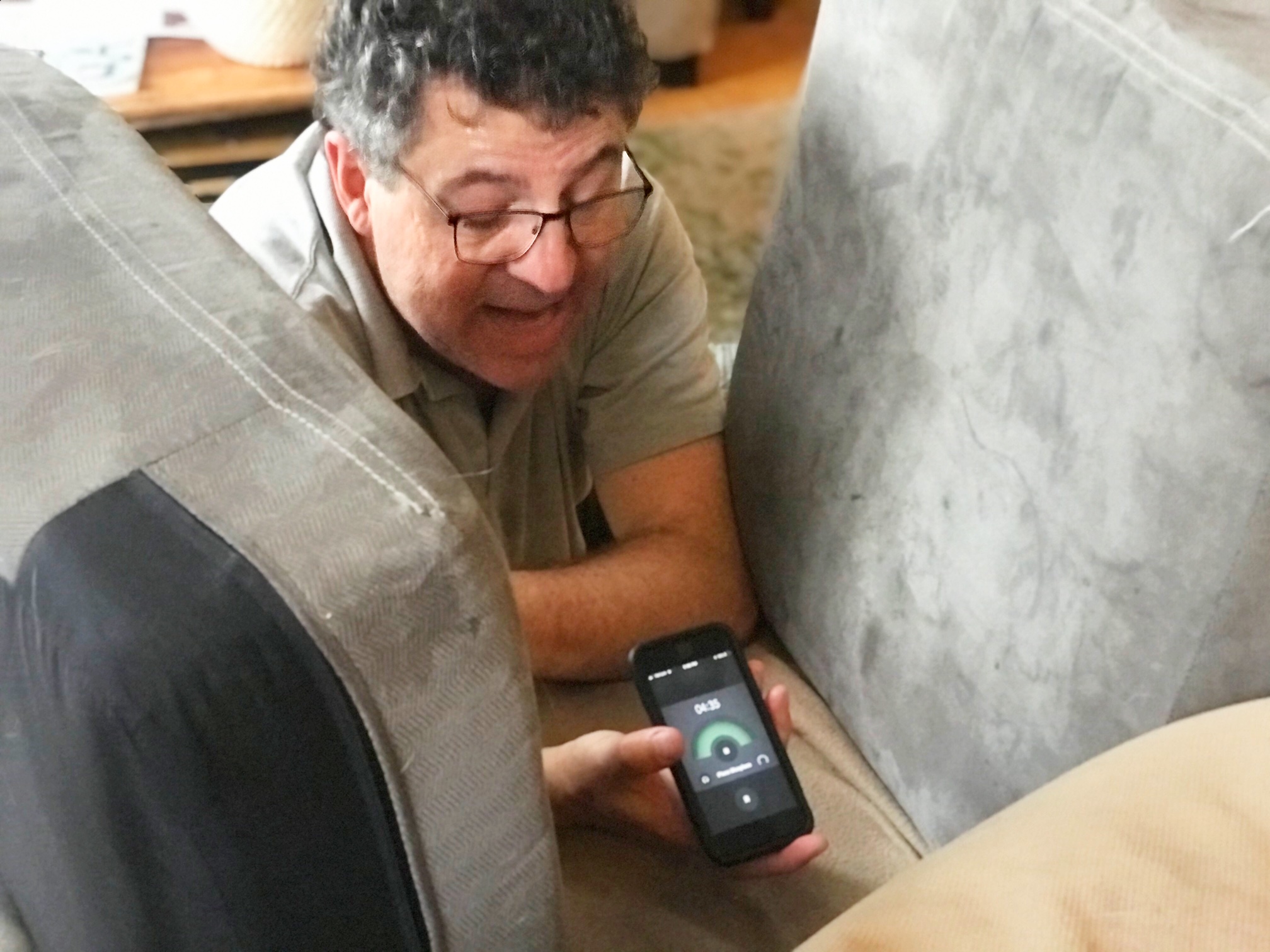
Kojo Nnamdi has been recording his weekday WAMU show from his sunroom since last Tuesday, the day after engineers arrived at his house with armloads of equipment. He thought they’d make camp in the basement, where he prepares for the show each day, but they installed him in the sunroom on an antique desk after “conspiring with my wife,” Nnamdi says. The studio in which Nnamdi does his show normally has a large window that faces Connecticut Avenue, so “I’m used to seeing daylight when I’m on the air,” he says. Currently, his view is of his back alley, which he notes is a lot quieter on weekdays than he’s used to seeing on weekends.
The Kojo Nnamdi Show is still being operated out of Control Room 1A at WAMU, with a skeleton crew in the office, screening calls, running the board, and producing.
Nnamdi says he misses the hurly-burly of a newsroom, with its conversations and jokes and thrashing out of ideas. Slack and conference calls make up some of the difference. WAMU management told employees not to worry too much about audible clues that they’re working from home—dogs barking, babies crying, or, in Nnamdi’s case, his dishwasher running or his doorbell ringing. When it comes to doing the show, though, Nnamdi says he definitely misses the opportunity to read cues on guests’ faces. “You want to know you when you have to put them at ease,” he says. He and political analyst Tom Sherwood interact a lot via eye signals during the Friday “politics hour.” “It’s a real disadvantage not to see Tom,” he says. “I always pretend that I’d much rather not see him, but the fact of the matter is it’s going to be difficult to work this way.”
All this disruption, though, is worth it, Nnamdi says: “I’m 75. I’m in the high-risk group.”
